Too often, it feels like your mouse plays second fiddle to your keyboard. Part of the reason it’s overlooked is keyboards are perceived to be more important. However, try navigating around your computer without a mouse. You will quickly realize the importance.
Mice are equally important for productivity. Some facts about computer mice will go a long way toward reestablishing their attractiveness and dispelling the idea that mice aren't necessary.
We've produced a detailed list about computer mice, similar to our list of interesting facts about keyboards in computer history, so people may finally start appreciating their value.
Here's everything you'll ever need to know about the computer mouse:
1. The trackball started as a top-secret military project
When people ask, “What is a computer mouse?” they likely wouldn’t expect you to say a classified, military invention. But, that’s precisely what it is.
So, next time you use a mouse, just know you’re basically a soldier. All joking aside, the fact is that the trackball began as a top-secret military project and was created by the military more than ten years before the mouse.
A trackball is a pointing device that uses a ball positioned in a socket. Sensors detect rotation, and buttons are usually positioned on either side. This enables far greater freedom and convenience.
Regardless, the trackball was an important step on the evolutionary path to the computer mouse we use today.

2. The mouse inventor--Douglas Engelbart
In 1967, Douglas Engelbart changed computer science forever. However, it wasn’t until the 1990s that he finally started getting his due. But not in the form of money.
Unfortunately, the inventor of the mouse never received any money for his patent. Even more insulting, his patent titled “X-Y Position Indicator for a Display System” was mostly ignored.
Many laughed at his concept, dismissing it as unrealistic.
Nowadays, it’s embedded in every single operating device.
3. Mouse rage is real
Have you ever been using your computer and been irritated because it took longer than normal for it to respond to a click or scroll?
It probably comes as no surprise that mice and computers can provoke violent outbursts.
Mouse rage describes a negative psychological response toward your mouse. It often involves cursing and some sort of emotional outburst. This ranges from throwing your mouse against a wall or smashing it against your desk.
Just remember that you are not alone. However, for many, this does not alleviate the fury that might be felt when your mouse fails to reach your operational standards.
4. John C. Dvorak wrote that no one would want to use mice
Not everyone had the vision of Mr. Engelbart. In fact, when it comes to the storied history of the mouse, it’s worth noting it had its detractors. One of the most notable was John C. Dvorak, a popular computer columnist.
In 1984, Dvorak wrote an article titled "No One Wants To Use A Mouse." Eventually, that article came back to haunt him and followed him around for the rest of his career.
In his defense, he was not the only critic; many others criticized the mouse until they all saw how useful it was. Still, it's fun to look back at history's critics and wonder what they were thinking.
5. Early iterations of the mouse were actually named after turtles
When most people hear the word mouse, they think of the common rodent, so early iterations of the mouse were actually named after a different animal: turtles.
The reason for naming it after a turtle was simple. The device has a hard shell that protects the ball inside.
People weren’t entirely satisfied so it went through a few re-brandings. At first, it was named “X-Y Position Indicator for a Display System.” As you can imagine, that didn’t exactly roll off the tongue.
Afterward, users started calling the devices “turtles” on account of their shells. However, the wire coming out of the device caused it to resemble a rodent, so it was eventually renamed “rodent” before ultimately changing to “mouse.”
Perhaps if they had known we'd ultimately have wireless mice, the name "turtle" might have remained.
6. Using a mouse can burn calories
It’s a shock for many that mice can help burn calories, but it’s a proven fact.
Each click burns 1.42 calories. While that doesn’t seem like much, it certainly adds up.
In fact, it’s estimated that the average person clicks their mouse 720 times each hour, which is over 720 calories burned!
While this shouldn’t be perceived as a replacement for exercise, it’s a great reminder that there are little things you can do to compensate for inactivity.

Now that you know the most interesting facts about the mouse…
…start using yours already! There is absolutely no other tool that compares to the mouse in terms of productivity and success.
And, if you're searching for the ideal mouse, the OMOTON Bluetooth Mouse is head and shoulders above the competition. Whether you need it for your phone, computer, or iPad, it can do it all. Lightweight, durable, and with adjustable DPI, you can’t go wrong.







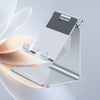

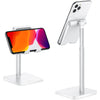
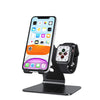
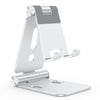

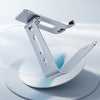

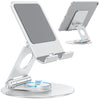
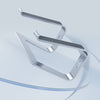
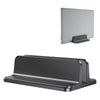
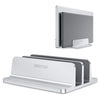

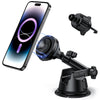
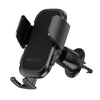

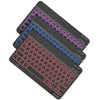


![[iOS System] Seamless KB066](http://omoton.com/cdn/shop/files/B00B24I4II-1_100x.jpg?v=1686815508)
![[Mac System] Seamless KB066](http://omoton.com/cdn/shop/files/B09899K4L6-1_c724630c-c160-4901-9900-f670acc91416_100x.jpg?v=1686732854)
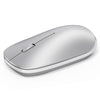
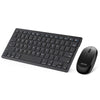

![[2 pcs] Full Protection A020-iPad Pro 11](http://omoton.com/cdn/shop/products/3a69674b6a96497b2ffd7f3025a80d58_e9954f3e-86f5-43e6-9a80-575bcfebd158_100x.jpg?v=1686381536)
![[2 pcs] Full Protection A017 - iPad 10.2 inch](http://omoton.com/cdn/shop/files/61tTSoyyuuL._AC_SL1500_100x.jpg?v=1686021560)
![[3 pcs] Rugged & Robust A013-iPhone 11/XR](http://omoton.com/cdn/shop/files/61po0_qv46L_100x.jpg?v=1686032850)
![[3 pcs] Rugged & Robust A013-iPhone 14](http://omoton.com/cdn/shop/files/16c0b02250912a03578c8b2af6825f11_100x.jpg?v=1686708163)
![[3 pcs] Rugged & Robust A036-iPhone 14 Pro](http://omoton.com/cdn/shop/files/1_2_100x.jpg?v=1686022078)
![[3 pcs] Rugged & Robust A013-iPhone 14 Pro Max](http://omoton.com/cdn/shop/files/1_2_2_100x.jpg?v=1686023071)
![[3 pcs] Rugged & Robust-iPhone 13](http://omoton.com/cdn/shop/files/71HO0AZn0BL_100x.jpg?v=1688522739)
![[3 pcs] Rugged & Robust-iPhone 13 Pro](http://omoton.com/cdn/shop/files/71pE0jfT24L._AC_SX679_100x.jpg?v=1688523892)
![[3 pcs] Rugged & Robust-iPhone 13 Pro Max](http://omoton.com/cdn/shop/files/71c1zssdVHL._AC_SX679_100x.jpg?v=1688527213)
![[3 pcs] Rugged & Robust A024-Samsung Galaxy A14](http://omoton.com/cdn/shop/files/1_2_68d89e60-61af-4cba-9867-9a91941aee01_100x.jpg?v=1686030778)


